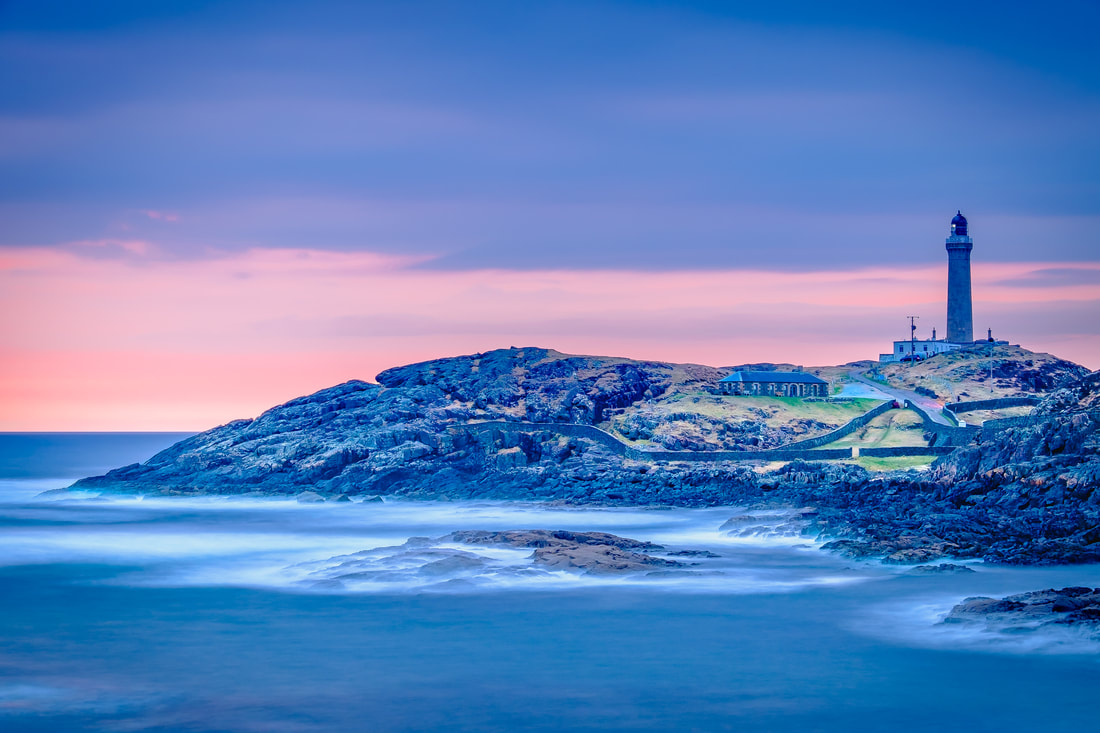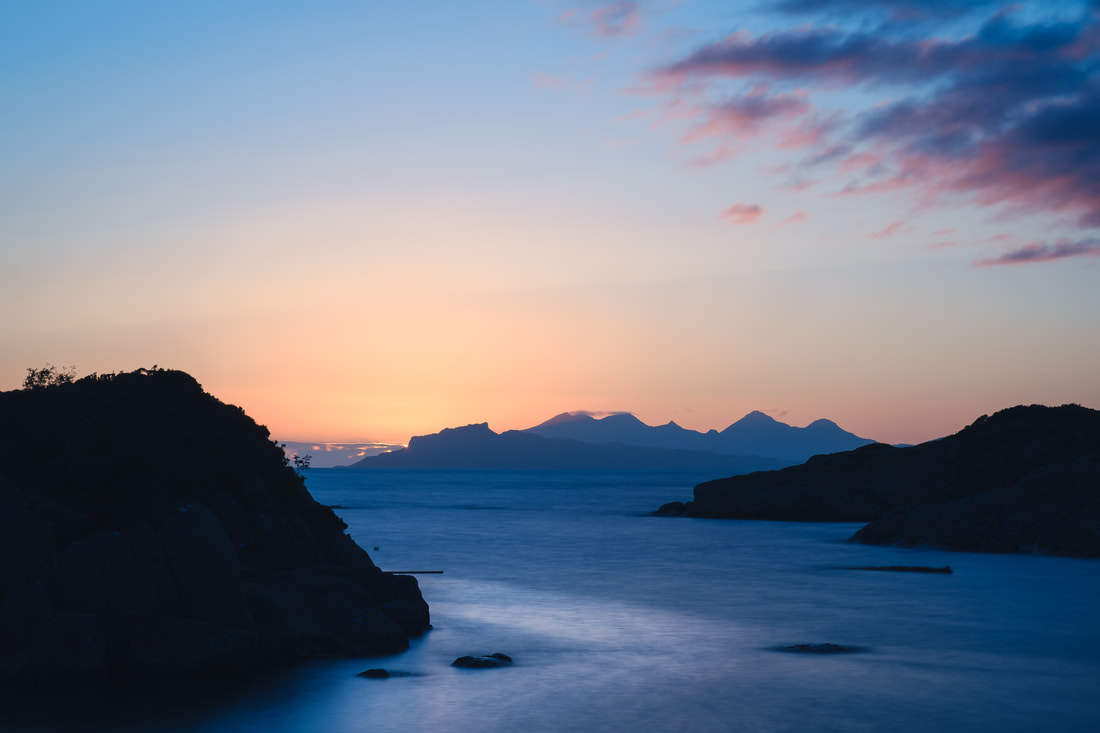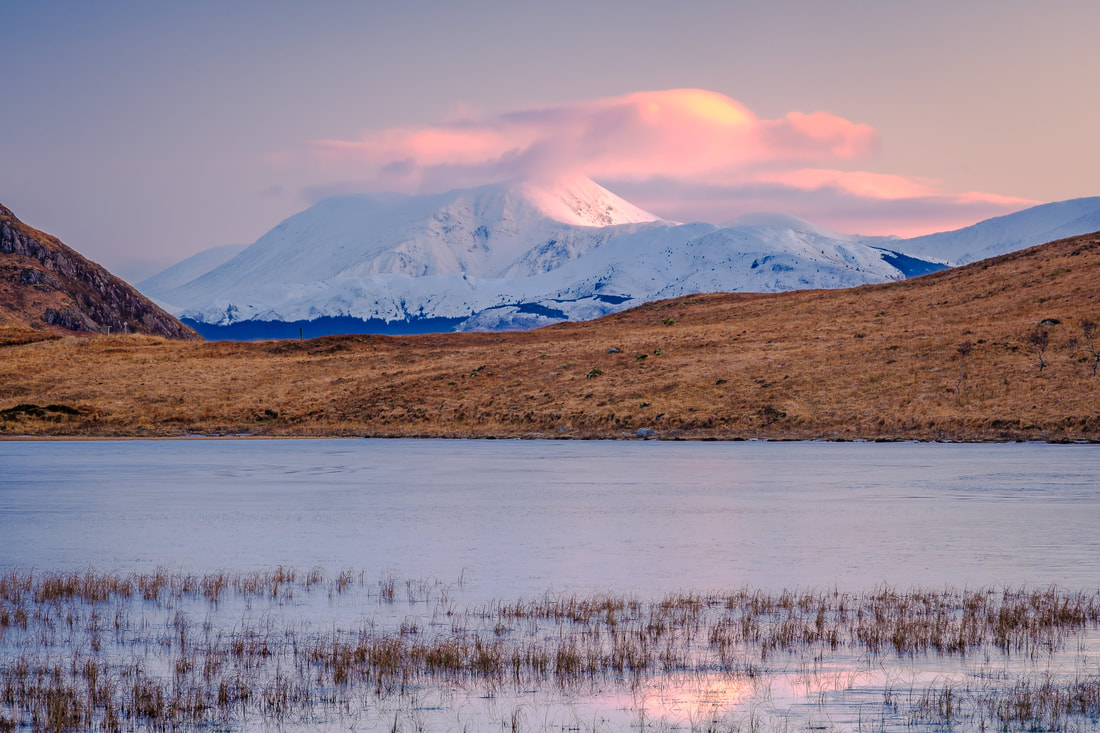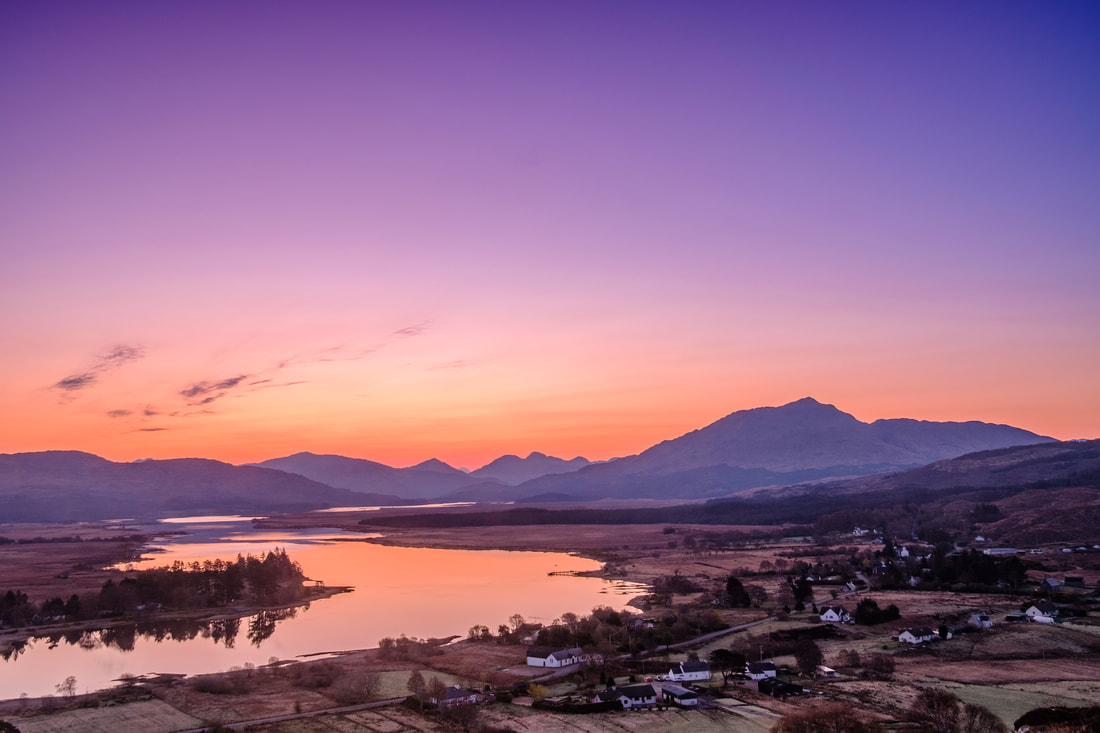|
I been looking through my library of images in recent weeks, looking for common themes that might form the basis of a couple of projects for the next 12 months or so and noticed that there were a few photographs that were taken during what is called the “Blue Hour”, an incredibly photogenic time of the day when the landscape is infused with rich, blue tones. One of these images is below and it shows Ardnamurchan Lighthouse on its rocky promontory with the sea, the land and the sky all tinged with these rich, blue tones. So what exactly is the blue hour? The blue hour occurs twice a day, just before sunrise and just after sunset, so you might be thinking that it is simply the time of day known as twilight, but there is a little more to it than that. This first thing to know is that there are three phases of twilight: civil twilight, when the Sun is between 0° and -6° below the horizon; nautical twilight, when it is between -6° and -12° below; and astronomical twilight, when it is between -12° and -18°below. During civil twilight, there is still colour in the sky, and it is light enough to see objects clearly; the sky is darker during nautical twilight and by astronomical twilight it's almost completely dark. The evening blue hour is the period of transition from civil to nautical twilight (or vice versa in the morning), when the Sun is between -4° and -8° below the horizon. At this time, the longer red wavelengths of light from the Sun pass straight out into space and the shorter, blue wavelengths are scattered in the atmosphere. The result is a rich and saturated cool blue colour that is incredibly atmospheric, so if romance and mystery are your thing, this really is a great time head out with your camera. Before you do though, you should know that despite its name, the blue hour only lasts for 20-40 minutes depending on your location, the time of year and atmospheric conditions. At this time of year here on the Peninsula, it begins at about 20 minutes after sunset and at 45 minutes before sunrise. In either case it lasts for around 20 minutes, so the opportunity for photography is fleeting, but nonetheless very rewarding. Beyond its aesthetic appeal, I find the blue hour to be an incredibly tranquil and thought-provoking time of day, and this is especially true of the evening blue hour. I’m not sure what it is, but this “in-between time” during which day transitions into night, I feel compelled to pause and appreciate the beauty of that exact moment. This is especially true if I’m out in the landscape alone with my camera because moments of such solitude bring a real sense of peace and stillness that allow me to disconnect from any stresses or challenges that I may have experienced during the day.
As the blue hour comes to an end, the sky transforms from the canvas of rich blues that I was photographing to a deepening shade of indigo. With this comes the gradual unveiling of the stars, with each one sparkling ever brighter as the sky darkens. As more and more stars become visible, I am often struck by the vastness of the cosmos and with this comes strong feelings of awe and humility due to Earth’s true insignificance. The sheer scale of the Universe, with its billions of galaxies each containing billions of stars, puts into perspective the minuscule size and fleeting existence of our home planet. It is a mere speck of dust in the cosmic ocean and seems so inconsequential in comparison to the unimaginable expanses of space stretching out in all directions. It is in these moments that I am reminded of the transient nature of human existence. Yet, amidst this feeling of smallness, there is also a sense of wonder and curiosity. The very fact that we can contemplate our place in the Universe, that we can marvel at the stars and ponder the mysteries of existence, is a testament to the extraordinary capabilities of the human mind. It is in moments like this that I just love catching the blues.
6 Comments
Although Ben Nevis sits just to the east of Fort William, its height of 1,345 metres (4,413 feet) not only makes it the highest mountain in the British Isles, but also means that it is visible from a number of places on the Peninsula. One such place is Lochan Doire a' Bhraghaid and this is where I took the photograph below. It was taken on a cold January morning when the pink light from the Sun rising in the south-east was caught by the mountain’s south facing upper slopes and the clouds that covered what is an extremely elusive summit. A summit that, perhaps one day, I’ll be lucky enough to capture. The summit of Ben Nevis is notorious for unpredictable and often harsh weather conditions that are constantly influenced by North Atlantic weather systems. The mountain is in an area that experiences a significant amount of precipitation, averaging around 4,406 mm of rain annually. This, combined with the mountain's height, creates a perfect environment for cloud formation. The warm and moist air from the Atlantic meets its high peaks, resulting in the frequent presence of clouds. In fact, its summit is only visible for an average of 30 days per year, making it extremely elusive and therefore a challenge to photograph. However, I am hoping that with a little planning, patience, and persistence, I will eventually get the shot that I have in my mind’s eye.
Planning is the cornerstone of successful landscape photography and involves thorough research and preparation before heading out to a location. In this instance, the factors to consider are weather conditions, time of day, and the position of the sun. For the shot I’m after, I’m looking for an unobscured snow-covered summit with warm sunlight falling on the sides of Ben Nevis that are visible from Lochan Doire a' Bhraghaid some 17 miles to its southwest. This means that the shot needs to be taken on a morning during a cold and clear spell of weather in the months of December, January and potentially February because this is when the sun will be rising in the right place. I used various topographic maps and sun tracking apps to help me pick these months and various weather forecasts help me decide which days to go out on. Next up is patience. Nature does not always cooperate, and capturing the perfect shot often requires waiting for the right moment. The ideal lighting, weather conditions, and natural elements may not align immediately so I often find myself waiting an hour or more before I feel that the time is right to press the shutter button. On the morning I took the image above, I arrived before sunrise to see that the summit of Ben Nevis was clear. I therefore set up my tripod, framed the shot and waited in anticipation of Sun rising to bath it in a warm pink glow. However, it was not to be because a bank of cloud rolled in from the north and obscured the summit just as sunlight began to fall on the mountain. So finally, this is where persistence comes in, because it involves a commitment to returning to a location time and time again until the conditions are just right. In this instance, the lighting may have been perfect, but the weather did not cooperate. It was tantalisingly close, but that 1 in 12 chance of the summit being clear conspired against me and I didn’t quite get the shot I was looking for. In fact, I have returned to Lochan Doire a' Bhraghaid a few times since to capture that “elusive peak”, only to be met with no success. Never mind though. The thrill of landscape photography is often to do with the “chase” and when the conditions eventually do align, the resulting image will be more than enough reward for all the planning, patience, and persistence. Until then, I look forward to the day when I can share the image that I have in my mind’s eye with you. There’s something magical about watching the beginning of a new day, especially on mornings as perfect as the one when I took the photograph below from the hills above Acharacle while looking north-east over Loch Shiel to Ben Resipole and the distant peaks of Ardgour beyond. Although it is only a short climb, the view you get from up there is simply amazing and this makes it one of my most favourite places to do one of my most favourite things, which is to watch a sunrise. I’m a morning person and naturally wake up early, but I do realise that not everyone is like this. Therefore, I thought that I’d give some reasons why I think it is good to at least once, get up early with the birds, head to a favourite place and watch a new day begin:
|
AuthorHi, Archives
July 2024
Categories
All
|
Steven Marshall Photography, Rockpool House, Resipole, Strontian, Acharacle, PH36 4HX
Telephone: 01967 431 335 | Mobile: 07585 910 058 | Email: [email protected]
Telephone: 01967 431 335 | Mobile: 07585 910 058 | Email: [email protected]
All Images & Text Copyright © 2024 - Steven Marshall - All Rights Reserved






